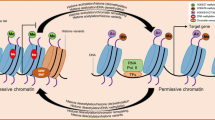Abstract
Nitrous oxide gas (N2O) can be used to produce polyploid plants, but the mechanism of action is unknown. The actin and microtubule cytoskeleton was observed in N2O-treated microsporocytes of Lilium spp ‘Asiatic hybrid lilies’ using fluorescence microscopy after staining with DAPI, FITC-conjugated tubulin antibody, and phalloidin-conjugated Alexa Fluor 546. Additionally, microsporocytes of L. longiflorum were observed with acetocarmine staining following N2O treatment. A typical metaphase I microtubule distribution was observed in control microsporocytes. After treatment with N2O for 24 h, microtubules were effectively depolymerized; this prevented chromosomes from moving to the poles, resulting in chromosome retention in the center of N2O-treated cells. Cell plate formation took place without delay, however, yielding one daughter cell with a diploid genome and another daughter without chromosomes. In addition, N2O treatment often induced micronuclei due to aberrant chromosome separation during cytokinesis. Actin filaments in microsporocytes are insensitive to N2O. These findings indicate that N2O mediates polyploidization by inhibiting microtubule polymerization, but not actin filament formation, during microsporocyte meiosis.




Similar content being viewed by others
References
Akutsu M, Kitamura S, Toda R, Miyajima I, Okazaki K (2007) Production of 2n pollen of Asiatic hybrid lilies by nitrous oxide treatment. Euphytica 155:143–152
Bajer AS, Molè-Bajer J (1986) Drugs with colchicine-like effects that specifically disassemble plant but not animal microtubules. Ann NY Acad Sci 466:767–784
Barba-Gonzalez R, Miller CT, Ramanna MS, van Tuyl JM (2006) Nitrous oxide (N2O) induces 2n gametes in sterile F1 hybrids between Oriental × Asiatic lily (Lilium) hybrids and leads to intergenomic recombination. Euphytica 148:303–309
Berdahl JD, Barker RE (1991) Characterization of autotetraploid Russian wild rye produced with nitrous oxide. Crop Sci 31:1153–1155
Brinkley BR, Rao PN (1973) Nitrous oxide: effect on the mitotic apparatus and chromosome movement in HeLa cells. J Cell Biol 58:96–106
Burbank KS, Mitchison TJ (2006) Microtubule dynamic instability. Curr Biol 16:R516–R517
Dickinson HG, Sheldon JM (1984) A radial system of microtubules extending between the nuclear envelope and the plasma membrane during early male haplophase in flowering plants. Planta 161:86–90
Dvorak J, Harvey BL, Coulman BE (1973) The use of nitrous oxide for producing euploids and aneuploids in wheat and barley. Can J Genet Cytol 15:205–214
Jordan MA, Thrower D, Wilson L (1991) Mechanism of inhibition of cell proliferation by Vinca alkaloids. Cancer Res 51:2212–2222
Jordan MA, Thrower D, Wilson L (1992) Effects of vinblastine, podophyllotoxin and nocodazole on mitotic spindles: implications for the role of microtubule dynamics in mitosis. J Cell Sci 102:401–416
Kato A (1999) Air drying method using nitrous oxide for chromosome counting in maize. Biotech Histochem 74:160–166
Kato A (2002) Chromosome doubling of haploid maize seedling using nitrous oxide gas at the flower primordial stage. Plant Breed 121:370–377
Kato T, Kakiuchi M, Okamura S (1985) Properties of purified colchicine-binding protein from a cultured carrot cell extract. J Biochem 98:371–377
Mineyuki Y (2007) Plant microtubule studies: past and present. J Plant Res 120:45–51
Nygren A (1955) Polyploids in Melandrium produced by nitrous oxide. Hereditas 41:287–290
Okazaki K, Kurimoto K, Miyajima I, Enami A, Mizuochi H, Matumoto Y, Ohya H (2005) Induction of 2n pollen in tulips by arresting the meiotic process with nitrous oxide gas. Euphytica 143:101–114
Östergren G (1954) Polyploids and aneuploids of Crepis capillaris produced by treatment with nitrous oxide. Genetica 27:54–64
Östergren G (1957) Production of polyploids and aneuploids of Phalaris by means of nitrous oxide. Hereditas 43:512–516
Otegui M, Staehelin LA (2000) Cytokinesis in flowering plants: more than one way to divide a cell. Curr Opin Plant Biol 3:493–502
Rieder CL, Palazzo RE (1992) Colcemid and the mitotic cycle. J Cell Sci 102:387–392
Sackett DL, Varma JK (1993) Molecular mechanism of colchicine action: induced local unfolding of beta-tubulin. Biochem 32:13560–13565
Sheldon JM, Hawes C (1988) The actin cytoskeleton during male meiosis in Lilium. Cell Biol Int Rep 12:471–476
Suzuki T, Tanaka I (1999) Attachment of kinetochores to spindle microtubules during meiosis I of Lilium microsporocytes. Chromosome Res 7:121–129
Tanaka I (1991) Microtubule-determined plastid distribution during microsporogenesis in Lilium longiflorum. J Cell Sci 99:21–31
Taylor NL, Anderson MK, Quesenbery KH, Watson L (1976) Doubling the chromosome number of Trifolium species using nitrous oxide. Crop Sci 16:516–518
Welsh MJ, Dedman JR, Brinkley BR, Means AR (1979) Tubulin and calmodulin: effects of microtubule and microfilament inhibitors on localization in mitotic apparatus. J Cell Biol 81:624–634
Yasuhara H, Shibaoka H (2000) Inhibition of cell-plate formation by brefeldin A inhibited the depolymerization of microtubules in the central region of the phragmoplast. Plant Cell Physiol 41:300–310
Yoneda A, Akatsuka M, Hoshino H, Kumagai F, Hasezawa S (2005) Decision of spindle poles and division plane by double preprophase bands in a BY-2 cell line expressing GFP-tubulin. Plant Cell Physiol 46:531–538
Zeilinga AE, Schouten HP (1968) Polyploidy in garden tulips. II. The production of tetraploids. Euphytica 17:303–310
Acknowledgments
The authors gratefully acknowledge the helpful advice of Professor K. Takeno of Niigata University. This research was supported by a Grant-in-Aid for Scientific Research (No. 19580024) from the Ministry of Education, Culture, Sports, Science and Technology, Japan and by a Research Project for Utilizing Advanced Technology in Agriculture, Forestry and Fisheries from the Ministry of Agriculture, Forestry and Fisheries of Japan.
Author information
Authors and Affiliations
Corresponding author
Additional information
Communicated by Hugh Dickinson.
Rights and permissions
About this article
Cite this article
Kitamura, S., Akutsu, M. & Okazaki, K. Mechanism of action of nitrous oxide gas applied as a polyploidizing agent during meiosis in lilies. Sex Plant Reprod 22, 9–14 (2009). https://doi.org/10.1007/s00497-008-0084-x
Received:
Accepted:
Published:
Issue Date:
DOI: https://doi.org/10.1007/s00497-008-0084-x




